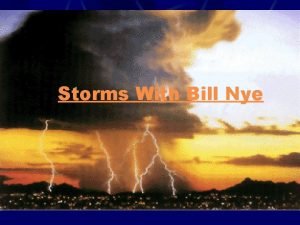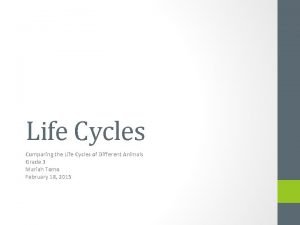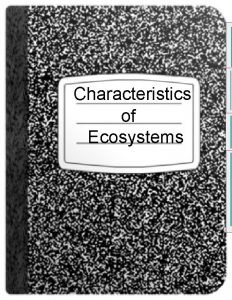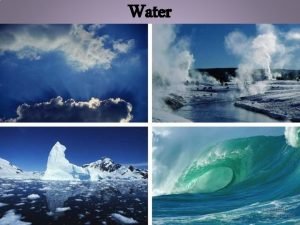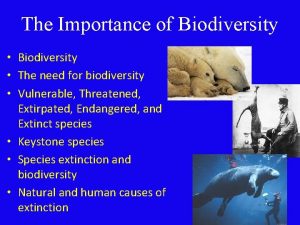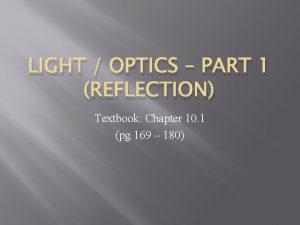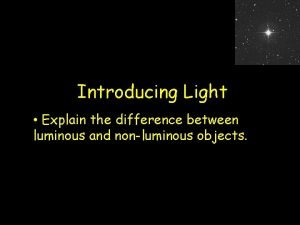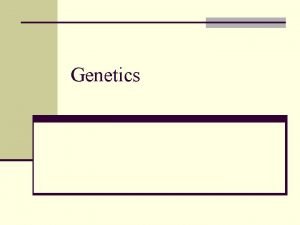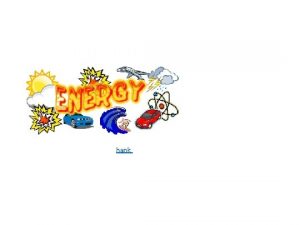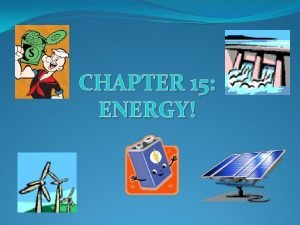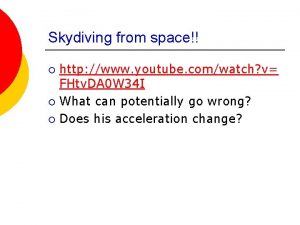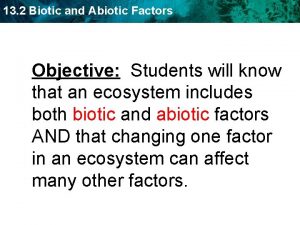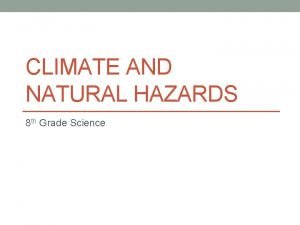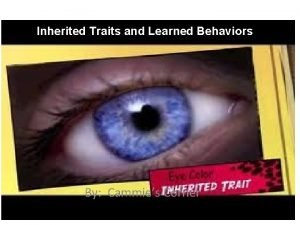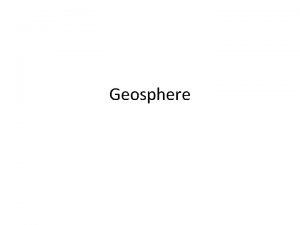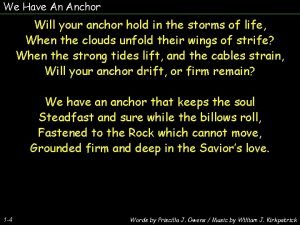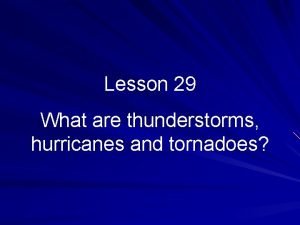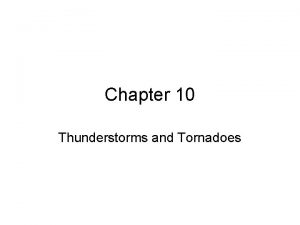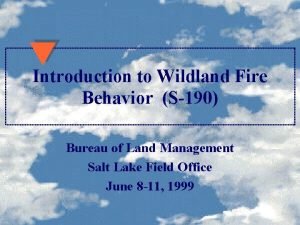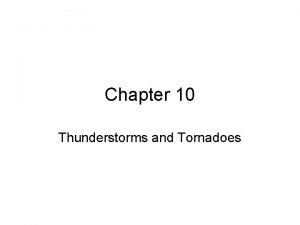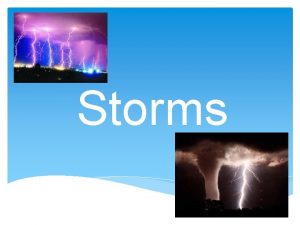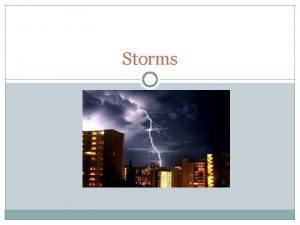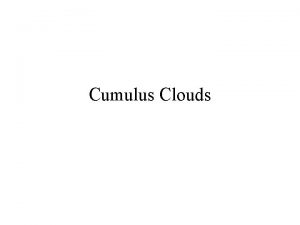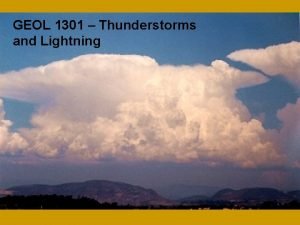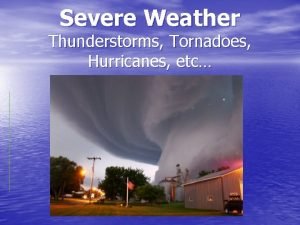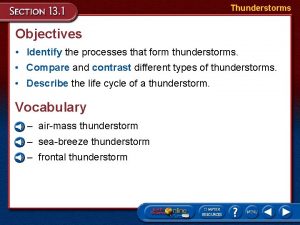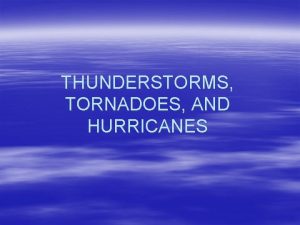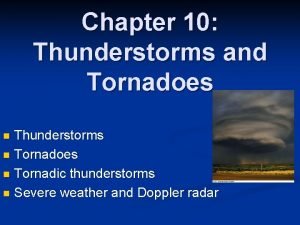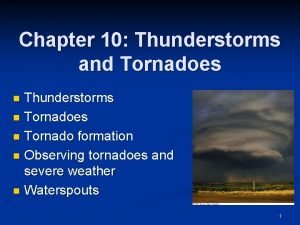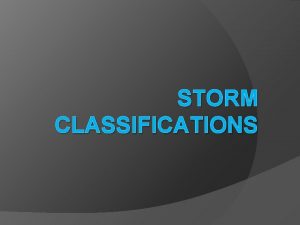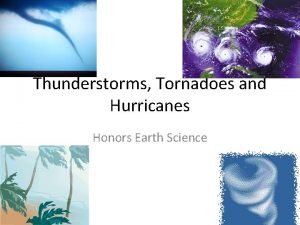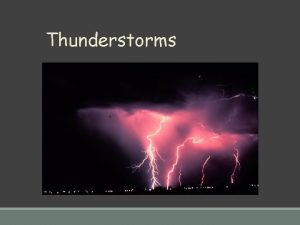Storms With Bill Nye Thunderstorms LIFE CYCLE Cumulus

Storms With Bill Nye

Thunderstorms LIFE CYCLE: Cumulus stage Mature stage Dissipating stage

Thunderstorms LIFE CYCLE: Cumulus stage air rises (updraft) forming a cumulus cloud updraft keeps precipitation from reaching the ground Cumulus stage Mature stage Dissipating stage

Thunderstorms LIFE CYCLE: Mature stage eventually precipitation is heavy enough to fall thru updraft & hit ground, producing a downdraft Cumulus stage Mature stage Dissipating stage

Thunderstorms LIFE CYCLE: Dissipating stage downdraft weakens the updraft, cutting off moist air rising to the cloud begins to evaporate Cumulus stage Mature stage Dissipating stage

Thunderstorms form mainly along fronts – may last for days Cumulus stage Mature stage Dissipating stage

Lightning A discharge of electricity from a: thundercloud to the ground, from cloud to cloud, or within the cloud

Lightning - Inside 1. 2. 3. 4. 5. Avoid contact with corded phones Avoid contact with electrical equipment or cords. If you plan to unplug any electronic equipment, do so well before the storm arrives. Avoid contact with plumbing. Do not wash your hands, do not take a shower, do not wash dishes, and do not do laundry. Stay away from windows and doors, and stay off porches. Do not lie on concrete floors and do not lean against concrete walls.

Lightning - Outside Lightning Desperation Position Stay away from metal objects, such as fences, poles and backpacks. Metal is an excellent conductor. The current from a lightning flash will easily travel for long distances Do NOT seek shelter under tall isolated trees! The tree may help you stay dry but will significantly increase your risk of being struck by lightning. Rain will not kill you, but the lightning can! Do NOT seek shelter under partially enclosed buildings Stay away from tall, isolated objects. Lightning typically strikes the tallest object. That may be you in an open field or clearing.

Tornado: violently rotating column of air that usually touches the ground

Tornado Formation rotating updraft of air can rotate l mesocyclone: spinning column formed by rotating updraft l eventually, mesocyclone can touch ground & make tornado l

Tornado Fujita Tornado Intensity Scale Fujita Scale Wind (mph) Damage F 0 - Light Damage < 73 Slight to chimneys, signs. Branches blown off trees. F 1 - Moderate Damage 73 - 112 Tiles off roofs; mobile homes/caravans lifted; cars blown off roads. F 2 - Considerable Damage 113 157 Mobile homes/caravans destroyed; cars lifted; large trees uprooted. F 3 - Severe Damage 158 206 Trains overturned; roofs blown off well-built houses; heavy vehicles thrown. F 4 - Devastating Damage 207 260 Well-built houses destroyed; large structures with weak foundations blown some distance away. F 5 - Incredible Damage > 261 Strong framed houses lifted off foundations or blown away; Car sized missiles thrown over 100 meters.

Tornado Prediction Conventional radar can show ‘hooks’ of precipitation within strong thunderstorms, but sometimes only shows hook once tornado hits ground – TOO LATE! Doppler radar can show rotation within the clouds giving up to 20 minutes warning before tornado forms


Tornado Watch indicates that conditions are right for a tornado to develop and that the sky should be watched. Be alert to changing weather conditions! Tornado Warning indicates a tornado has been sighted or that radar indicates one has developed or could develop within minutes. Warnings will give the location of the tornado and the area immediately affected by the warning. When a warning is issued, move quickly to shelter!

What do I do? Inside: Move to an interior room, preferably underground or on the bottom floor Protect your head & neck from flying debris Outside: Move inside if possible If in a car, get OUT of the car & lie down flat on the ground, preferably in a ditch away from the car & anything that might fall on you.

Hurricane The Power of Hurricanes (4 min 3 sec) Large rotating storm of tropical origin with sustained winds of at least 119 km/hr or 74 mph; usually occur in late summer, early fall The lose energy when they travel over land have a very LOW pressure system

Formation Eye: extremely low pressure center of the hurricane; air sinks here, so no clouds & very calm Eye wall: ring of violent thunderstorms around the eye; strongest wind & rain are here

Characteristics of a Hurricane classified by wind speed from tropical depression to tropical storm to hurricane

Effects of a Hurricane Storm surge: large wave of water caused by a low-pressure system High winds create large waves to damage coast & cause flooding Worst damage happens to right of hurricane in N hemp, because wind blows counterclockwise around the low, so the strongest winds are on the right

Saffir/Simpson Scale

Saffir/Simpson Scale minor hurricane, 7495 mph wind, minimal damage catastrophic hurricane, >155 mph wind, buildings destroyed & full evacuation, catastrophic damage 1 5

What do I do? If there is an evacuation order, EVACUATE IMMEDIATELY! Cover windows with plywood to protect them from flying debris Secure all outside furniture Danger is in high winds & flooding Beware of the calm at the eye. The storm isn’t over yet!

Blizzard winter storm with winds of 35 mph or more with considerable falling or blowing snow causing low visibility

Categorizing a Blizzard Sustained winds of 35+ mph Must last for at least 3 hours Winds can become high enough to create whiteout conditions which means visibility is less than a 1/4 of a mile Blizzards usually happen after there’s been a lengthy (long) period of cold weather. Blizzards are most common in the northern Great Plains.

What do I do? If a blizzard is predicted, purchase supplies ahead of time to last at least a week. Once the storm starts, STAY INSIDE! You can survive without food & melt snow for water. You cannot survive without shelter. Don’t go outside for any reason. Visibility is often so low you’ll get lost between your front door & the car.

Nor’easter low pressure system along East coast that blows strong winds from the northeast; not cold enough for a blizzard usually, but very strong winds & damage

Human Effect on Climate & Atmosphere

Human-Induced Climate Change l 1. Greenhouse gasses like carbon dioxide, methane & water vapor are produced by burning fossil fuels l 2. High-energy radiation from the sun enters the atmosphere, but low-energy radiation leaving Earth is trapped by the greenhouse gases, keeping the heat in & increasing average global temperatures.

Greenhouse Effect

Ozone Layer l 1. Located in the stratosphere & protects us from ultraviolet radiation l 2. Chemicals from aerosols & air conditioners, called chlorofluorocarbons (CFCs) are lowdensity, so float up to the ozone layer, reacting with it, allowing UV radiation through to Earth’s surface


Bibliography http: //www. eas. slu. edu/People/CEGraves/Eas 107/mteffect 1. jpg http: //www. auxonline. org/~futureweb/Weather/Aviation_weather/Wx_symbols/front_symbols. gif http: //cimss. ssec. wisc. edu/wxwise/station. gif http: //antwrp. gsfc. nasa. gov/apod/image/0409/frances 2_noaa_big. jpg http: //www. librarypreservation. org/management_and_planning/monitors 3 b. htm http: //www. photolib. noaa. gov/historic/nws/wea 02047. htm http: //www. ashcreekimages. com/Cloudscape 5. html http: //www. capetownskies. com/6027/may_jun 03. htm http: //met. no/met_lex/l_p/nimbostratus_bilder/image 002. jpg http: //www. weatherstock. com/cloudcat 3. html http: //www. srh. weather. gov/srh/jetstream/synoptic/precip. htm http: //www. accessnoaa. gov/aug 0701/oncamera. html http: //www. clas. ufl. edu/users/emartin/GLY 3074 S 03/images/atmcirccells. jpg http: //rst. gsfc. nasa. gov/Sect 14/airmasses_schem. jpg http: //fcgov. com/oem-images/cold-front. jpg http: //www. metoffice. com/education/curriculum/lesson_plans/weathersystems/partb. html http: //geography. radley. org. uk/metlink/ppt/depression/HTML/sld 001. htm http: //www. windows. ucar. edu/tour/link=/earth/Atmosphere/tstorm/occl_front. html http: //members. aol. com/pakulda/stpptnts. htm http: //www. wrh. noaa. gov/fgz/science/svrwx. php? wfo=fgz http: //www. econet. org. uk/weather/tornad. html http: //www. tnema. org/images/Misc/TORN 1. jpg http: //www. nhoem. state. nh. us/mitigation/Hurricane%20 Structure%20 Graphic. gif http: //www. estatevaults. com/bol/images/%20%20 Boston%20 Blizzard. jpg http: //www 1. ncdc. noaa. gov/pub/data/images/blizzard-midwest-19990102 -g 8 ir. gif http: //www. erh. noaa. gov/buf/neaster. jpg http: //www. chincoteaguechamber. com/62 -poling. jpg http: //www. iac. ethz. ch/en/groups/richner/cd/doc/radiosonde/images/sonde. jpg http: //www. msc. ec. gc. ca/education/teachers_guides/module 08_image_files/stn_model. gif http: //66. 208. 12. 20/amsedu/dstreme/images/sfc_map_12. gif http: //ngwww. ucar. edu/ncl/images/climate. gif http: //www. hprcc. unl. edu/nebraska/september 30 -2004 Year. TData. US. png http: //www. lightningsafety. noaa. gov/outdoors. htm
- Slides: 33
